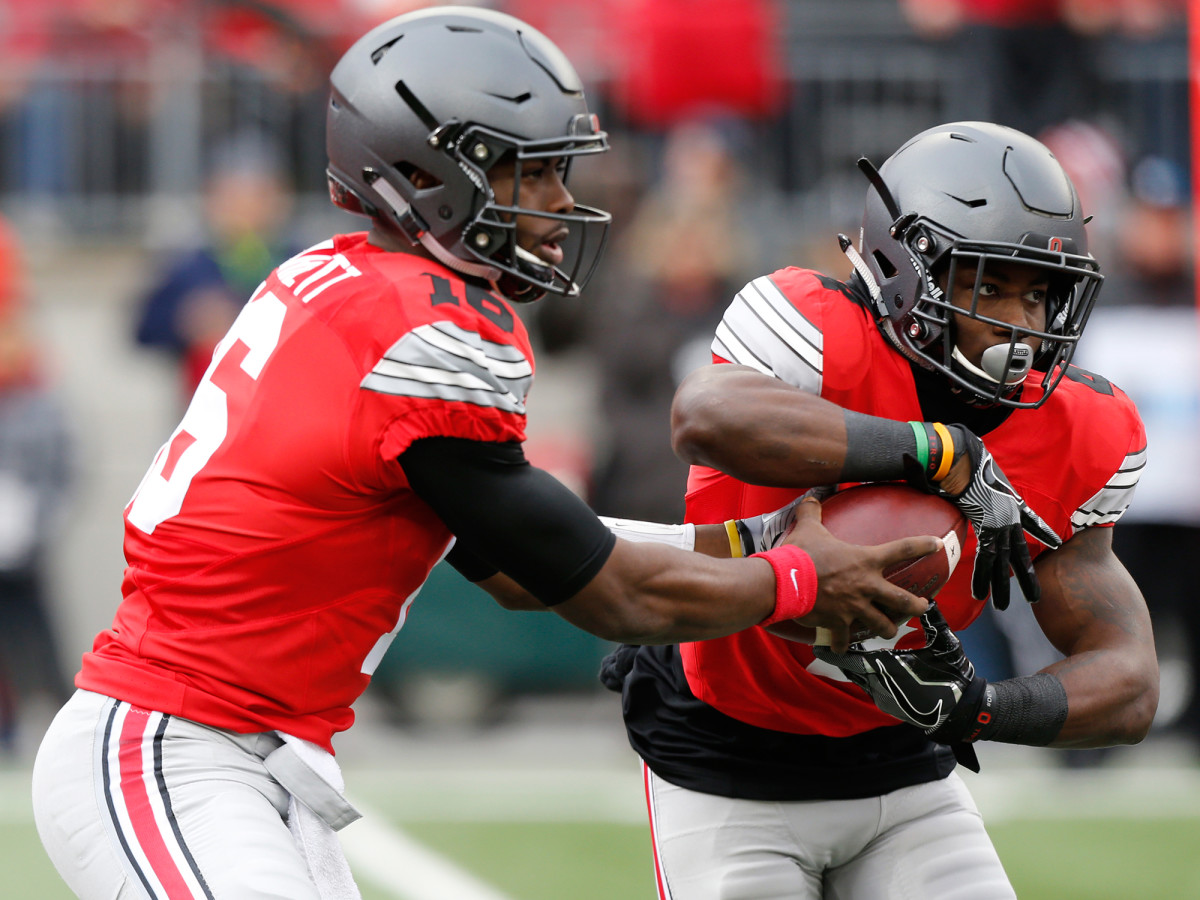Can Clemson upset Ohio State, return to title game?

The runner-up in the second College Football Playoff championship faces the winner of the first College Football Playoff championship game. In a 2016 season that featured the usual undulating plot lines but mostly predictable endings, a Clemson vs. Ohio State matchup in the Fiesta Bowl exemplifies business-as-usual in college football. That doesn't mean it won't be intriguing. Two play-making quarterbacks, two disruptive defenses, two coaches with playoff pedigrees—it's a show everyone might have expected to see, but one that everyone will watch breathlessly anyway.
Does Washington have any chance at upsetting Alabama?
What to know when Clemson has the ball
Deshaun Watson, the Tigers’ star junior quarterback, remains the great equalizer as a dual-threat playmaker. And any reports of his regression are greatly exaggerated: Watson’s 2016 numbers (67.6% completions, 37 TDs, 15 interceptions) compare favorably to his 2015 stats (67.8% completions, 35 touchdowns, 13 picks). Watson has the improvisational skill to counter the athleticism or sophistication of any defense; he proved that, if you recall, by scorching Alabama for 478 total yards and four touchdowns in last year’s championship game loss. This season, Watson has connected with six receivers at least 27 times; double-covering someone is bound to cause problems somewhere else. If there’s a concern for Clemson, it’s having a complementary piece in the ground game to keep defenses honest and at the mercy of Watson on read-option calls and play-action heaves. But that worry has also been muted by a late-season revival: After just three 100-yard efforts in the first 10 games, senior tailback Wayne Gallman had two in his last three outings. It appears to be a complete and battle-tested offense.
As everyone knows by now, Ohio State sent six defensive players into the NFL Draft last May and lost very little in the way of effectiveness this fall. The Buckeyes remain a stingy, highly opportunistic group that ranks third in the nation in scoring defense (14.2 points per game allowed) with 25 takeaways (tied for 10th nationally). The secondary is especially ball-hawking, with sophomore safety Malik Hooker the standout with six of the Buckeyes’ 19 interceptions, plus 10 passes defended. The Buckeyes’ pass efficiency defense (91.43 rating for opposing quarterbacks) leads the nation. This may not be the dominant pass rush that many would expect from Ohio State—junior Tyquan Lewis leads the team with a relatively modest 7.5 sacks—but the disruption on the back end helps the Buckeyes get off the field quickly. Opponents only convert 30.8% of third downs; just nine defenses in the nation are more effective in those situations. Ohio State won’t make it easy on Clemson's offense.
Who has the edge?
Ohio State

What to know when Ohio State has the ball
The Heisman Trophy push didn’t quite materialize for Ohio State junior quarterback J.T. Barrett, who enters the postseason as the nation’s 42nd-most efficient passer after a regular season with 2,428 yards through the air and 24 touchdowns against just five interceptions. As evidenced by those numbers, Barrett at least can avoid critical mistakes and spread the ball around to multiple playmakers. Curtis Samuel’s 58.7 rushing yards per game and 68.5 receiving yards per game make him the primary big-play threat, and it was his double-overtime scamper that beat Michigan to ensure the playoff berth. Still, no receivers average more than Dontre Wilson’s 13 yards per catch, and tailback Mike Weber’s 6.1 yards per carry are efficient but not explosive. What sort of resistance the Buckeyes’ offensive line can offer consistently against top-notch defensive fronts remains to be seen. It would seem that it’s up to Barrett to conjure some postseason magic. If he does, Ohio State can find enough big plays to win. If not, it could be a grind.
The best way to stifle the Buckeyes is with a defensive front that collapses pockets and pushes the line of scrimmage back. Well, Clemson enters the playoff with the nation’s No. 9 overall defense, thanks in large part to 112 tackles for loss, a figure that’s tied for third nationally. Its top three defensive linemen—Carlos Watkins, Christian Wilkins, and ACC defensive rookie of the year Dexter Lawrence—all weigh more than 300 pounds but can move like linebackers. It's no shock they combined for 31.5 tackles for loss, because most offenses can’t budge or elude all of them at once. Clemson’s 24 takeaways are tied for 20th nationally, so while it can force opponents into mistakes, this isn’t a unit that thrives on errors. It might be something better, though. Behind that stout defensive front, the Tigers impose themselves instead of reacting as the action unfolds. That’s a much more reliable tactic no matter what Ohio State throws at them.
Who has the edge?
Clemson
College Football Playoff committee takes stand for tough non-conference scheduling
One more key factor
Could self-inflicted wounds—or the ability to avoid them—play a major role in the Fiesta Bowl? Clemson, by a significant margin, gives back more yards per game via penalty than any other playoff team. The Tigers have been flagged for an average of 59.62 penalty yards per game, which ranks 93rd nationally. Ohio State is the next most error-prone by this measure, ranked 46th nationally with 48.33 penalty yards per game. (Alabama is 11th at 39.38 penalty yards per game, and Washington 37th at 47.54.) Clemson has a penchant for letting teams stick around, and stunting momentum with penalties is one way to accomplish that. The Buckeyes certainly can’t afford to have an uncharacteristically mistake-prone night against a Tigers team that doesn’t need the help.
